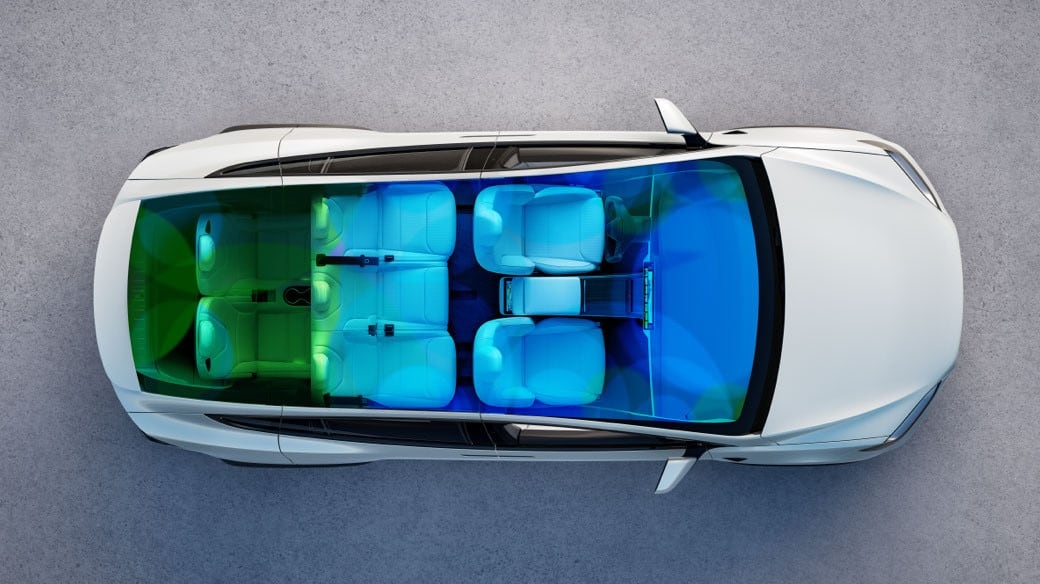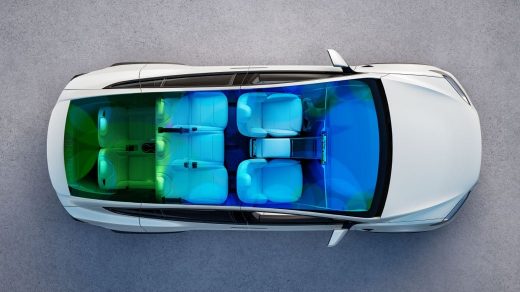Tesla will hike prices on self-driving mode, again
In 2021, Tesla’s phenomenal profits were offset by constant crisis
We were promised robots.


The close of 2021 finds Tesla wealthier than ever — and, in CEO Elon Musk’s case, wealthier than everybody else. The electric vehicle manufacturer notched records for both deliveries and profits this year despite a global chip shortage that decimated supply chains worldwide, effectively kneecapping the rest of the automotive industry’s production capacity. However its financial successes were often overshadowed by Tesla’s continuing production quality issues, multiple NHTSA and SEC investigations, high profile failures of its vaunted “Full Self Driving” system, as well as numerous vehicle recalls and delays for upcoming models. And with existing industry stalwarts like Ford, GM, Honda and the Volkswagen Group making concerted efforts to electrify their own offerings, could 2022 be the year that Tesla’s reign as top EV automaker finally ends?
The Good
2021 was, without a doubt, a banner year for Tesla’s bottom line. The company entered this year having met its 2020 goal of producing a half-million vehicles (of which it delivered 499,550 to customers), a nearly 133,000 unit increase over 2019. By April, Tesla had produced a record 180,338 vehicles and delivered 184,800 of them. Demand remained strong throughout the first half of the year thanks, in part, to price cuts on both the Model 3 and Model Y.
The company then broke its same record in July, having built 200,000 vehicles over the past three months, earning Tesla $1.1 billion in net income during the same period. “Public sentiment towards EVs is at an inflexion point and, at this point, I think almost everyone agrees that electric vehicles are the only way forward,” Musk said during the Q2 earnings call.
Unsurprisingly, Tesla’s record-breaking trend continued unabated through Q3 with the company rolling 237,823 vehicles off its production lines — nearly all of which were of the Model 3 and Model Y varieties — and delivering 241,300 of them. The company also began taking pre-orders for the UK version of the Model Y in October and announced that those Model Ys destined for the Chinese market would be receiving upgraded AMD Ryzen chipsets.
Tesla capped off its stellar financial year with announcements from Hertz that it plans to order 100,000 vehicles (though there remains uncertainty about how that deal will actually play out) and from Uber Eats that it intends to rent as many as 50,000 Tesla vehicles to its drivers.
The Bad
While Tesla enjoyed unabashed sales success with its core lineup, the company often struggled to meet release deadlines for a number of its yet-to-be-released models. Both the Cybertruck and Semi have both been pushed back to 2022 while the Tesla Roadster reportedly won’t be arriving until at least 2023. Tesla also took the strange tack of releasing an “entry-level” standard range Model Y for just a few weeks before discontinuing the trim level. Similarly, Tesla pushed back the release of its $130,000 Model S Plaid edition to June 10th, debuting it mere days after Musk unilaterally announced that the Model S Plaid+ was canceled outright,
The company was also beset by a wide array of production woes and vehicle recalls this year. In February, Tesla bowed to pressure from the NHTSA and recalled 135,000 Model X and S vehicles on account of faulty touchscreens. That same month, Tesla was forced to issue a recall for another 12,300 Model Xs on account of loose trim panels. In April, customers reported that the company had double-charged them for their vehicles, up to $71,000 in some cases, though Tesla was quick to reimburse the affected buyers and even threw in a $200 gift certificate for the company store.
June saw yet another recall, this time for 6,000 Model 3 and Ys over faulty brake caliper bolts, and in October, Tesla had to recall another set of Ys and 3s because their suspensions kept separating. Just last month, the company had to pull nearly 12,000 vehicles from across its product line on account of software issues — that’s not to be confused with the recent Tesla App outage that locked drivers around the world out of their own vehicles.
Tesla’s parade of crises also extended to the production lines themselves with the Fremont factory facing a sizeable COVID outbreak shortly after reopening in March. Musk complained often and loudly throughout 2020 over California’s quarantine lockdown laws and finally made good on threats to take his toys and go home, officially moving Tesla’s headquarters to Texas in October.
The company was also ordered to pay $137 million to former employee Owen Diaz after a San Francisco federal court jury found Tesla liable for the unconscionable racial bigotry Diaz faced while working at the Fremont plant. That lawsuit has been followed up by another, filed in November by Jessica Barraza who alleged “rampant sexual harassment” as well as continued verbal and physical abuse while she worked at the Fremont location.
Tesla’s Full Self Driving beta also turned out to be a mixed bag for the company in 2021. Following its debut in October of last year, beta 8.3 rolled out in May, doubling the size of the test program, before releasing beta 9 in July. Version 9’s rollout coincided with a new FSD subscription program charging customers $199 a month (or $99 a month if they’d previously purchased the now-discontinued Enhanced Autopilot feature) — assuming they already had the $1,500 FSD computer hardware installed in their vehicle.
However, Tesla’s decision to abandon radar-based autonomation sensors in favor of an optical-only setup in May led to a backlash from the NHTSA which subsequently forced the company to remove some of its driver-assist designations such as forward collision and lane departure warnings. In an effort to counter claims that the use of the Autopilot feature can cause drivers to become inattentive and less responsive once they resume control of the vehicle, Tesla activated its in-car driver monitoring cameras in late May.
FSD beta 10 arrived to great fanfare in September with owners noting smoother turns on city streets, improved display visuals and an overall improvement in the vehicle’s off-highway navigation. Those feelings were short-lived when, in October, the company was forced to revert its beta 10.3 implementation after becoming aware of “some issues,” per Musk, including a “regression” with left turns. Users also reported phantom forward-collision warnings and auto-steering bugs.
The company’s FSD faults — which have been implicated in multiple crashes where Teslas inexplicably rammed into first responder vehicles and other civilian drivers as well as a widely-reported wreck in Houston with nobody behind the wheel — has led to calls for increased scrutiny from and by the NHTSA, NTSB, the US Senate, and even the California DMV.
The FSD feature also prompted a 300,000-unit recall at the behest of the Chinese government over the ease in which FSD can be activated, though that was far from the only issue Tesla faced with the nation. In April, China banned Tesla vehicles from its military bases and “key state-owned companies” over fears that the cars’ myriad cameras could be leveraged for espionage. After nearly a month of wrangling and appeals to social media, Tesla finally caved to China’s cybersecurity demands and established a local clearinghouse for that data.
The Musk
And what would a Year in Review of Tesla be without a look back at CEO Elon Musk’s unique brand of shenanigans? Last October, Musk unilaterally disbanded Tesla’s PR department, thereby making his personal Twitter account the first, last and only stop for confirmation of the company’s decisions. This January, Musk reversed course slightly and, instead of reforming the department, began hiring people to respond to customer complaints made toward him on the social media platform.
Speaking of tweets, Tesla was also sued this year for allegedly breaking a previously struck deal with the SEC by allowing Musk to continue sending unapproved, “erratic” tweets as well as for the company failing to obtain a neutral general counsel to reign in its CEO. The National Labor Relations Board also went after Tesla in 2021, finding that the company had illegally fired a union activist. The NLRB consequently demanded that the worker be rehired and Musk delete a 2018 union-busting tweet related to the case.
2021 was also the year that Musk leaned hard into crypto. Tesla bought $1.5 billion worth of the stuff in February and briefly toyed with the idea of allowing customers to use the currency to purchase its vehicles, though those plans were quickly canned over concerns about Bitcoin mining’s environmental impacts. Musk also took time out of his Saturday Night Live hosting duties in May to crash the value of Bitcoin rival Dogecoin, though his later tweets helped the price of Dogecoin rebound, to a degree.
And then there was the whole Tesla “Robot” debacle, which I can’t even, I mean, it was literally just an actor in a spandex jumpsuit dancing around while Musk made a bunch of wildly unsubstantiated claims.
What’s Next
Looking ahead to 2022, Tesla appears to be on track for continued success. Its Berlin Gigafactory is nearly ready to start production and is expected to do so by the end of this month – barring any unforeseen setbacks. The company’s stockpile of chipsets and aggressive maneuvers to shore up supplies of battery precursor materials will insulate Tesla from many of the production bottlenecks that many other EV automakers are likely to struggle with throughout the new year.
However, even with Tesla’s record-breaking production figures from the past couple of years, the number of vehicles it delivers annually is still a small fraction of what more established automakers sell. BMW, for example, sold 2.3 million vehicles worldwide in 2020. In the same year, GM sold 2.5 million in the US alone. And as those companies increasingly turn their attention to the EV market while leveraging economies of scale that Tesla cannot match, Musk’s company could soon find itself relegated back to being a niche EV brand rather than an industry titan.
(47)


